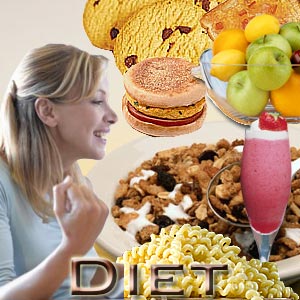Ketogenic Diet Plan

Ketogenic diet is a special method of treating epilepsy (seizure disorders). This high-fat, low carbohydrate diet has been around since nearly 80 years. The Ketogenic Diet was developed at Johns Hopkins Hospital. At that time, there were not many medications to treat epilepsy. This ketogenic diet plan makes the body utilize fat for energy instead of glucose.
This is not a yo-yo diet but a form of epileptic treatment that needs to be rigorously followed for a long time to yield good results. This diet differs from the Atkins diet. There has been a resurging interest in ketogenic diets as a treatment option for seizures.
This revived interest can be attributed to the unpleasant side effects associated with AED (Anti Epileptic Drugs). Read on to find out what constitutes a ketogenic diet and its possible side effects.
How a ketogenic diet works
The ketogenic diet is high in fat and low in carbohydrates. Due to lack of dietary sources of glucose, the body converts fat to ketones to utilize as energy source. Ketones are formed when the body uses fat for its source of energy. This is referred to as a process of ketosis. Though it is still unclear as to how it exerts an anti-epileptic effect, it has been seen that the ketogenic diet works on children who have not responded well to anti-epilepsy medications.
Ketones are not dangerous and can be detected in the urine.
Ketosis usually occurs in people who are fasting. A high fat diet sans carbohydrates mimics fasting. It is essential to monitor the diet very carefully since even a small amount of sugar can cause the body to shift to glucose production over ketones. All medications and products must be sugar free.
This involves a 'long chain triglyceride diet'. A diet that contains 75 - 100 calories and 1 - 2 grams for each kilogram of the child's body weight is recommended. The fluid intake is also restricted so as to enhance the success of the diet by increasing the concentration of ketones. A ketogenic diet is usually started off under a dietician's care. It begins with a fasting diet for a day to check if the child's urine shows ketones. Once the ketones are detected, the diet is started. It is essential that the diet be strictly adhered to.
Ketogenic Diet Plan
The ketogenic diet showed improved condition in children who have not responded well to medicines, in particular those suffering from the Lennox-Gastaut syndrome. This diet was also effective for myoclonic seizures and 'minor motor' seizures as well as tonic-clonic seizures and complex partial seizures. Many children on this diet have experienced nearly 50% reduction in seizures. Some have even become seizure-free. Many of them begin to take reduced doses of epilepsy medication.
Ketogenic diet foods
Ketogenic diet foods include beef, steak, hamburgers, roast beef, lamb, pork, bacon, ham as well as seafood such as crabs, lobster, tuna, salmon and trout. Other ketogenic diet foods involve use of butter, oils, mustard and soy sauce. Items containing minimal carbohydrates can also be included as ketogenic foods. They are peppers, artichokes, salami, pastrami, sausages and liverwurst.
Be sure to include broccoli, lettuce, cabbage and spinach. As for fruits in the ketogenic diet plan, consumption of grapefruit, strawberries, olives, kiwis and lemons are allowed. Foods high in carbs are not suitable for the ketogenic diet plan. So keep out the donuts, candy, cake, rice, potatoes, cereals, bananas, peaches, honey, bagels and such.
Side effects of Ketogenic Diet
Some of the side effects of the ketogenic diet are dehydration and constipation. If the child has an inherent defect in processing fat, it can lead to serious side effects. This diet is not very effective on adults though sometimes they are put onto it. Decreased bone density and some eye problems are sometimes noticed. Therefore it is essential that the diet be carefully monitored.
A ketogenic diet may induce sluggishness for a few days initially. Other side effects of following the diet for longer durations are kidney stone, abnormal liver function and high blood cholesterol levels. Since the diet is not balanced in vitamins and minerals, the dietician may suggest supplements for calcium and vitamin D, iron and folic acid.
Routine blood tests are taken to ensure that there are no medical problems. The growth of the child is also monitored. If the diet has brought about sufficient control over seizures, the ketogenic diet is gradually discontinued. Usually children show a response within a few weeks.
Top of the Page: Ketogenic Diet Plan
Tags:#ketogenic diet #ketogenic diet plan #ketogenic diet foods

Therapeutic Lifestyle Changes Diet
Intermittent Fasting Plan
Flexitarian Diet
Dukan Diet Plan
Diet Plateau
High Protein Diet
Elimination Diet
Raw Food Diet
Paleo Diet
Liver Cleansing Diet
Intermittent Fasting Diet
Low Fat Low Cholesterol Diet
Low Carb Diet
Vegan Diet Plan
Hay Diet
Sacred Heart Diet
Heart Attack Diet
Diet after Gastric Bypass
RICE Diet
Gluten Free Diet
Acid Reflux Diet
Detox Diet
Sonoma Diet
Glycemic Index Diet
Montignac Diet
Diabetic Diet Plan
Healthy Breastfeeding Diet
Negative Calorie Diet
Fad Diet
Blood Group Diet
Diverticulitis Diet
DASH Diet
Ornish Diet
3 Day Diet Strategy
Ketogenic Diet
Zone Diet Plan
Anti Aging Diet
South Beach Diet
Gall Bladder Diet
Low Cholesterol Diet
Low Sodium Diet
Diet and Kidney Disease
Scarsdale Diet Plan
Macrobiotic Diet
Osteoarthritis Diet
Depression Diet Plan
Migraine Diet
Restricted Salt Diet
Gout Diet
Rotation Diet
Diet Cancer Patient
Ways to better Health

Boost Metabolism
BMI Calculator
Low Fat Dessert
Whey Protein
Diet and Fitness
Fitness Exercise Articles
Cardio Workout
Aerobics
Yoga
Body Toning
Top of the Page: Ketogenic Diet Plan
Popularity Index: 101,492

